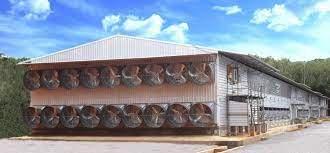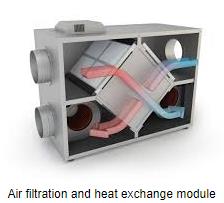A recent review article* considered available and prospective technology intended to limit the introduction of viruses of livestock and poultry into housing by the aerogenous route. This article, although not providing any specific solutions to the current problem of HPAI, may stimulate creativity among agricultural engineers to adapt or modify available modalities.

Existing methods include filtration that has limitations with respect to fan capacity considering the volume of air that has to be moved to support large flocks. Application of HEPA filtration may be effective with small units housing specific pathogen-free stock or elite-level breeders. Unfortunately, the ventilation requirements for a compartment of a house holding upwards of 100,000 laying hens requiring as much as 500,000 cubic foot per minute of air displacement at 0.25” swp. resistance could not function adequately with ultra high-efficiency filtration.
Emerging technologies include electrostatic precipitators with and without ultraviolet irradiation could in theory be used. Again, these systems are suitable for medical facilities, pharmaceutical and high-technology manufacturing plants but adaptation to poultry and hog housing is beyond current capability to achieve efficient destruction or inactivation of viruses.

Advanced technologies that may be used in industrial and medical applications again would be difficult to apply in livestock housing. These include microwave inactivation and generation of reactive oxygen compounds.
The recognition that the virus responsible for HPAI can be transmitted by air entrained on dust particles suggests that some combination of filtration and electromagnetic inactivation could be possible. Unfortunately, HPAI is very much an all-or-nothing situation. Introduction of even a small quantum of virus into a susceptible, closely confined flock will result in propagation of the pathogen and the emergence of the disease. Unfortunately a small quantum of virus does not produce only a limited infection. Once introduced, the entire susceptible flock will be exposed and given the pathogenicity of H5 and H7 viruses, mortality in excess of 90 percent will occur. In reality authorities in most industrialized nations adopt a policy of depopulation immediately following a diagnosis. Recognition that HPAI is transmitted through air does not necessarily invalidate biosecurity since there are other more obvious routes of infection. The converse is that even the most extreme biosecurity procedures approaching the envelope of practicality will not provide absolute protection in the event that a large quantity of virus is shed by migratory birds in the vicinity of a complex.
*Ouyang, H. et al. Control Technologies to Prevent Aerosol-Based Disease Transmission in Animal Agriculture Production Settings: A review of established and emergent approaches. Front.Vet.Sci.doi:10.3389/fvets.2023.1291312